The pressure is normal: why does the data center control the air overpressure?

In a person, everything should be fine, but in a modern data center everything should work like a Swiss watch. Not a single component of the complex architecture of the data center engineering systems should be left unattended by the maintenance service. It was these considerations that guided us at the Linxdatacenter site in St. Petersburg, preparing for the certification of Uptime Management & Operations in 2018 and bringing all the data center systems in line with the best world standards.
Today I will tell you how and why we implemented a system of remote pressure control and “backpressure” of air in the server. Let me remind you that in the process of preparing for the Uptime Institute audit one of the tasks to be solved was the issue of cleanliness. Our team worked in two directions: cleaning (previously, my colleague already talked about how we dealt with dust in the server rooms) and pressure control in the server rooms. I, as the chief engineer of the company, was just entrusted with the second.
What are we talking about
In any server room there is a system of general ventilation. It is arranged very simply: one ventilating machine works for air inflow inside, the second - on its extract outside. Both engines are controlled by frequency regulators - that is, you can change the frequency of their revolutions and thereby regulate the volume of air supplied / removed.
The tasks of this system are two:
')
- Provide the required air exchange for a comfortable stay of people in the server room (the number of people is set on the basis of the specificity of the room),
- Provide excess air pressure in the server room so as not to draw dust particles into the room through open doors and maintain the necessary cleanliness.
The inlet fan must supply more air to the server than it is drawn by the hood. This provides excess pressure in the server room in relation to the neighboring rooms - the so-called "backwater" of air. With such a system, air enters the server only through the inlet filters, and the flow of unfiltered air into the server air is excluded.
If suddenly everything happens the other way around - exhaust ventilation removes more air than supply air - then unfiltered air begins to flow into the server from adjacent rooms, which is often the reason for the presence of dust on surfaces and equipment.
No control
It seems to be all simple. However, at the time we started work on improving the quality of cleaning in the data center, we did not have an effective tool to monitor the presence of backwater. We set the frequency of the feed more than the frequency of the exhaust, and then made the additional setting "by eye". Doors in the server open with difficulty (as if attracted inside) - backwater is negative. If, on the contrary, the closer fails to cope with the closure, then the backwater is very strong. Groping for a certain balance between these two states, we stopped somewhere in the middle.
However, this approach is unreliable, and we considered it impossible to continue to rely on it.
Why? Working "by eye", it is impossible to take into account the influence of the state of air filters on the power of the supply ventilation. If the filter is clean - we will see certain indicators of resistance and the volume of air supplied, but if the filter is dirty, then these figures will differ markedly. According to the dynamics of the opening and closing of the door, these nuances can not be traced.
Usually, the filter is replaced by a standard mechanical differential pressure gauge, which disables ventilation at a certain stage of filter contamination (the pressure difference before and after the filter should not exceed a certain indicator corresponding to the filter cleanliness rate).
It turns out that there is a long period of life of the filter, until it is gradually polluted, and the standard differential ventilation pressure gauge considers it suitable for operation. But the power of ventilation and, consequently, the power of the backwater vary depending on the state of the filter.

Regulated ventilation diffmanometer.
As a result, we came to the conclusion that the process of setting up and controlling the backwater in such a scenario is too complicated and again ineffective for the data center.
Decision
For the answer to the question “And what should we do?” We turned to the best international practices, which was helped by a trip to Stockholm with a tour of local data centers.
In one of the data centers, we saw the solution we needed - a mechanical diffanometer was installed at the entrance to the server and showed the pressure difference “server / corridor”.
Interestingly, the Swedish colleagues use diffmanometers at the entrance to the server and to monitor the contamination of the ventilation filter: they change the filters while reducing the backwater, and did not wait for the signal from the standard diffmanometer of the ventilation system. Indications manomentra visually monitor attendants on rounds.
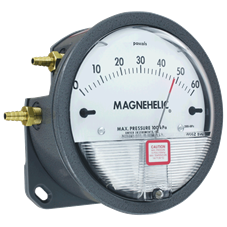
Returning, we began to look for similar equipment in Russia. It turned out that such diffmanometers are used in our so-called “clean rooms”, that is, in operating rooms, laboratories, etc. Due to the special status of the premises the prices for this equipment turned out to be exorbitant.
In addition, we needed not an analog device, but a digital one, preferably with a 4-20mA output, so that it could be connected to the data center monitoring system. This was important for setting thresholds for sending alerts, and for collecting and analyzing statistics.
Who seeks will always find
We were lucky - soon after the start of the search, we managed to find the necessary device: a digital differential pressure gauge with a screen and an output for connecting to the BMS with a budget of about 10,000 rubles per unit.
We only installed, configured and wondered why we had not guessed this before, and why this solution is not standard in data center projects.
It looks like this:
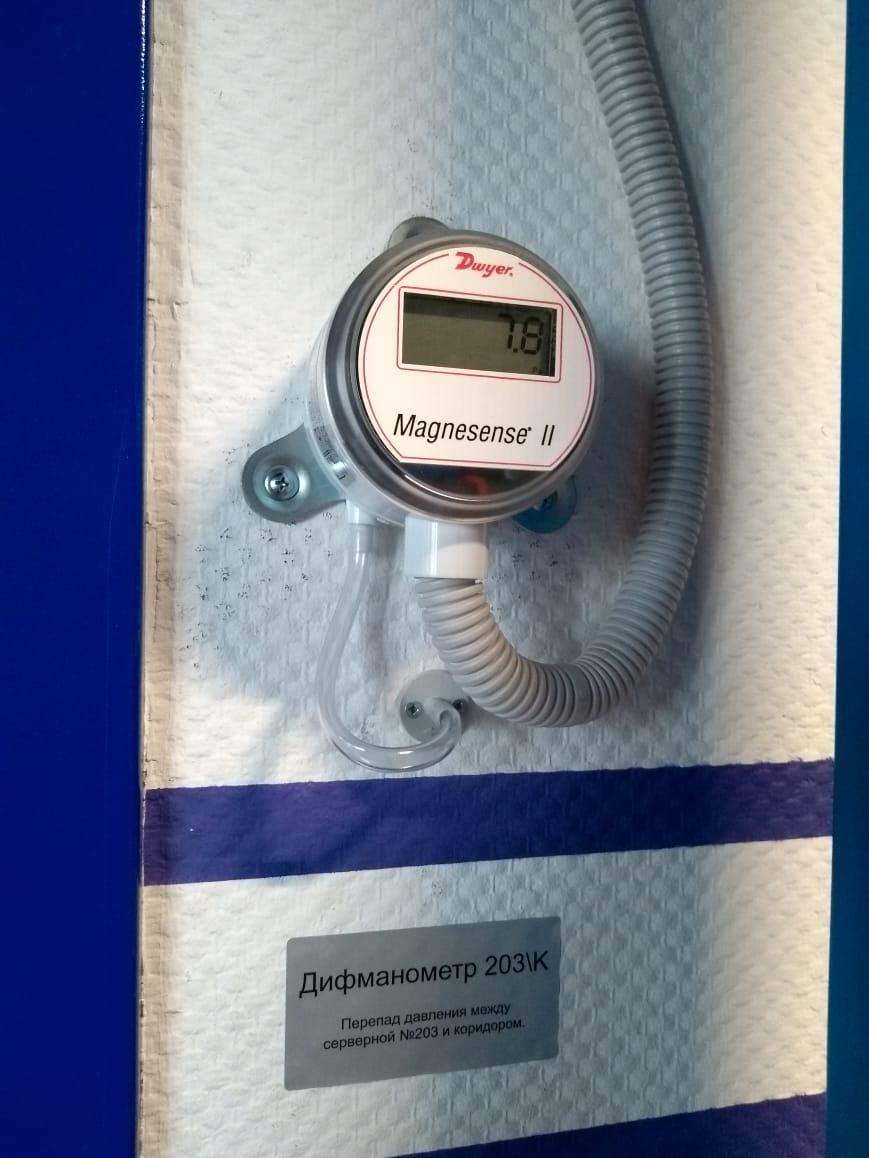
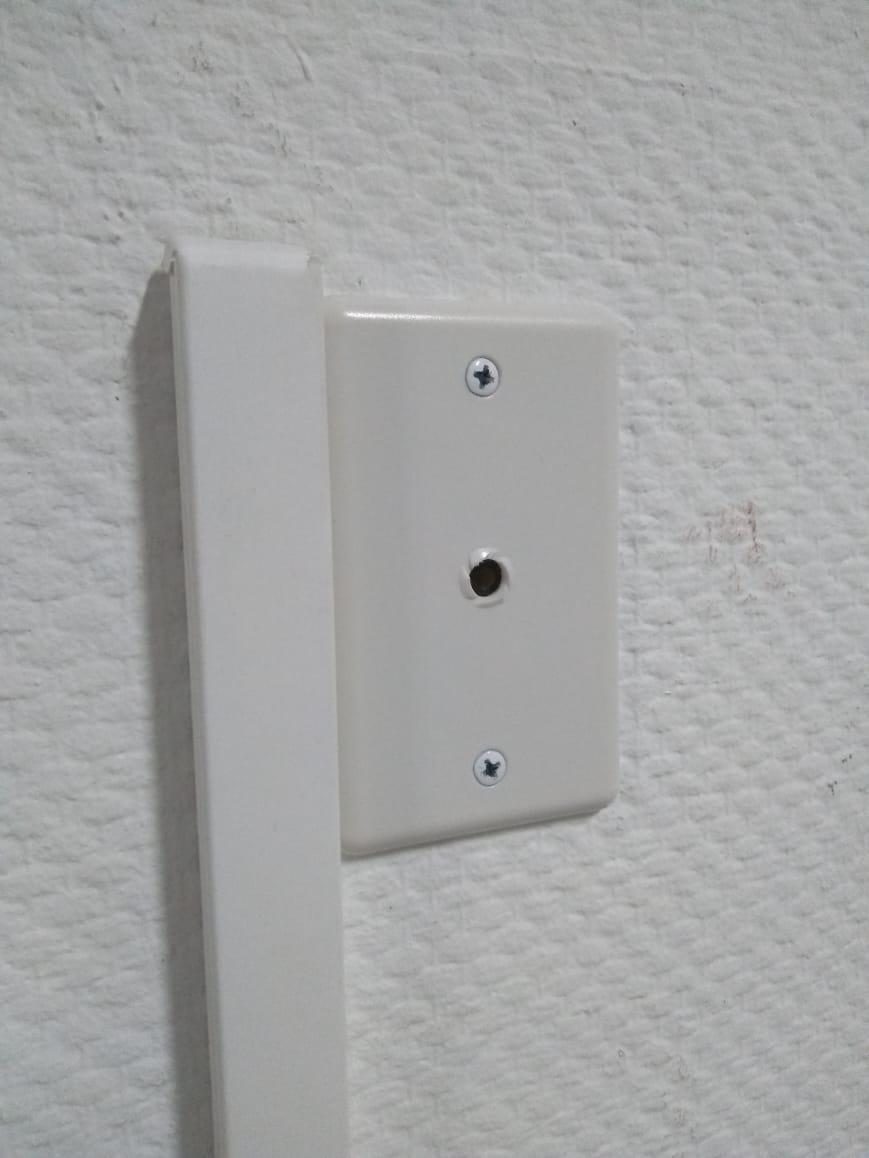
Electronic diffmanometer in the corridor outside the server room, the tube of one measuring channel is led into the server room, the second channel measures the pressure in the corridor.
And this is how the device is displayed in the data center monitoring system:
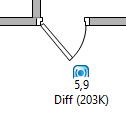
This is the statistics of the manometer readings in the monitoring system:
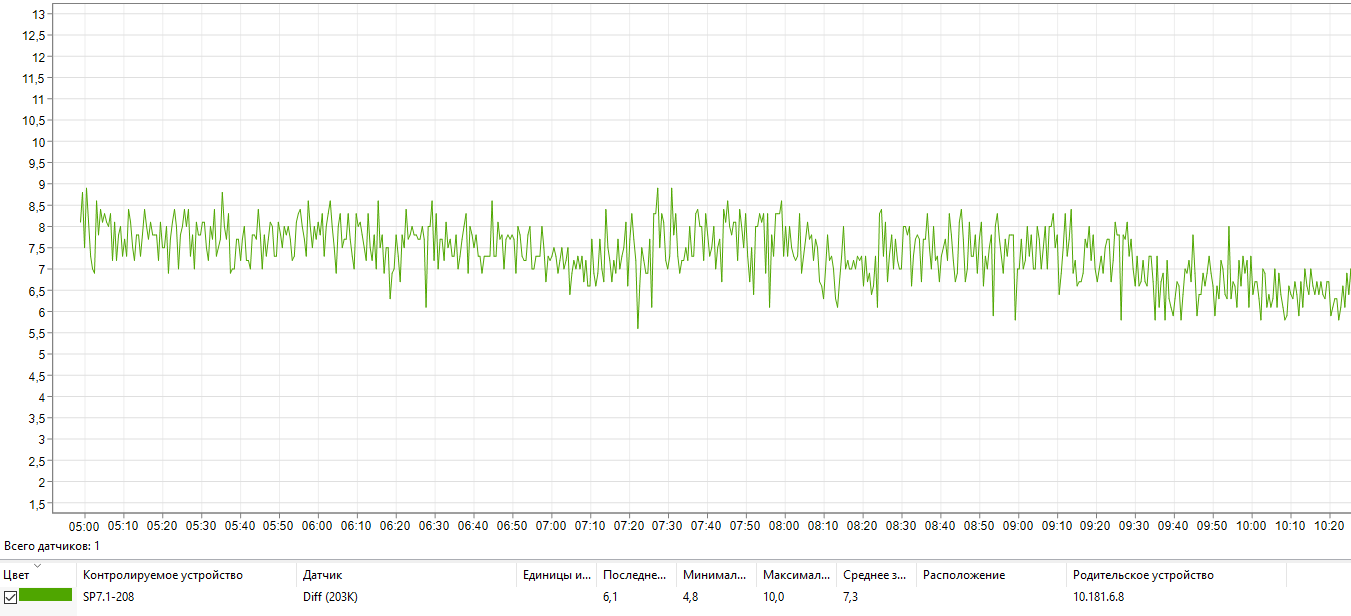
According to GOST R ISO 14644-4-2002 “Cleanrooms and associated controlled environments”, taken as a guide, “to open doors unimpeded and to eliminate unforeseen oncoming air flow due to turbulence, as a rule, the pressure drop between clean rooms or clean zones with different purity classes should be from 5 to 20 Pa. "
It is this range that we have taken as the norm in the data center. As soon as a deviation occurs, it is immediately registered in the system, as shown in the graph below.
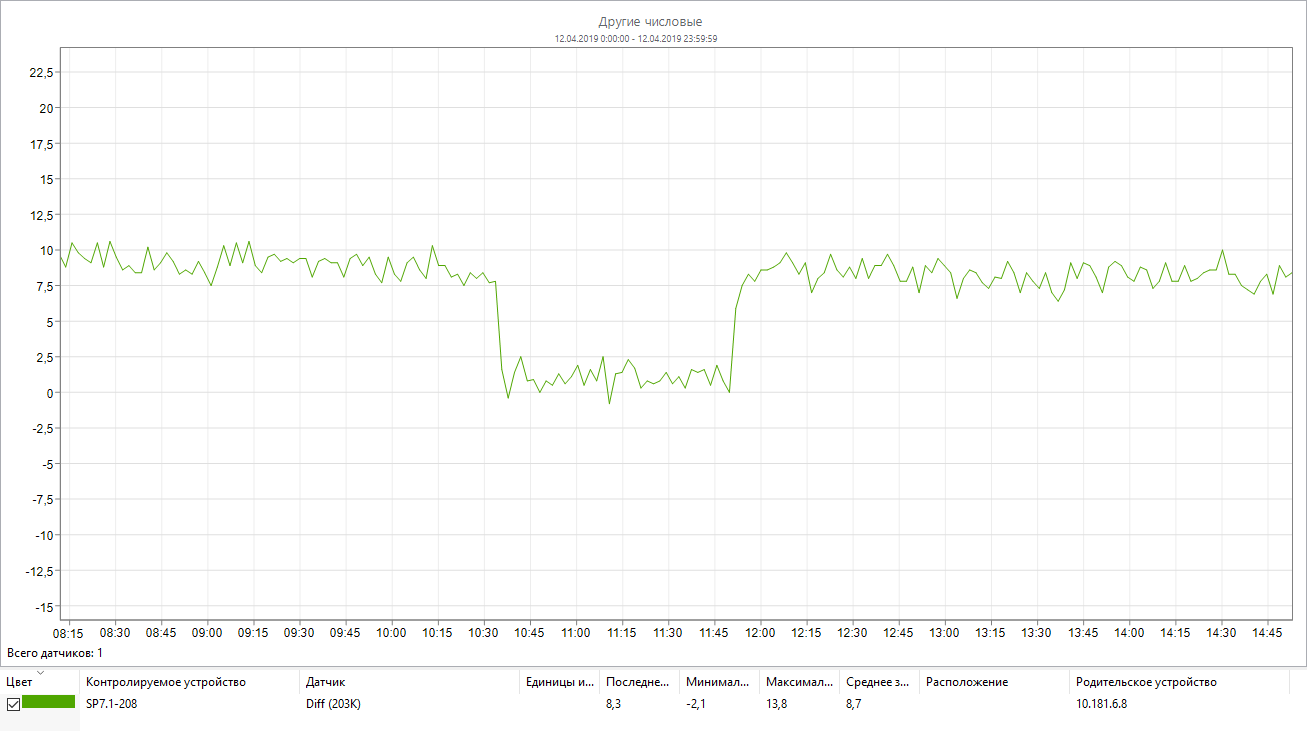
A sharp drop in pressure on the graph is an open door to the server room.
If the sensor reads below the setpoint for more than 5 minutes, something means with the filter, some kind of accident has occurred, in short, something freelance. Specifically on this graph, the reason is the long opening of the door to bring equipment into the room.
What we got
First , a new level of control and transparency of the data center engineering systems.
Secondly , cleanliness control has become even more effective: the system allows you to prevent the reduction of backwater and to change the air filters in advance or to eliminate other reasons for its decline.
Third , all these processes are controlled by mathematically precise tools. We collect the history of observations in dynamics and have statistics on the actual life of the air filters and all abnormal situations.
The audit by Management & Operations and our recent visit to European data centers showed that we are pioneers in this direction not only in Russia, but also in the EU - such solutions are not found among every market leader in data centers in Europe.
Of course, this system is not key to the operation of the site’s engineering systems. At the same time, this is a very useful addition to the service life and an excellent illustration of the high standards of our data center. There are no trifles in our industry.
Source: https://habr.com/ru/post/457566/
All Articles